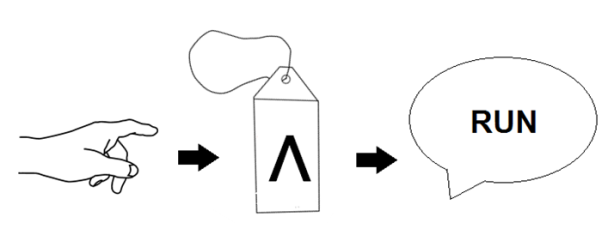When I was a boy, I used to enjoy playing children’s games such as Tag. They were great team spirit builders.
In this activity,I would like to share an idea for giving learners practice of phonemic symbols. The activity can be adapted for a class of any size and level but works particularly well with large and lower-level classes.
First, prepare TAGS for the activity. For these, use phonemic symbols (see sample in Figure 1) downloaded free of charge from
Also, create a TAGGER’s card as in Figure 1.
To prepare the tags, I cut up the phonemic symbols, stick them onto a sheet of A4 paper, laminate them and tie some string to them so that the learners can hang them around their necks e.g.
Figure 1
One advantage of laminating the TAGS, is that they last a long time and you can re-use them for warmers any time during a course.
TIP: Please note that you may not be able to use all the sounds from the phonemic chart with your class, so be selective here. One suggestion would be to give the learners tags of sounds which they find problematic or require more practice of. Alternatively, you may swap tags during the activity. For instance, start with individual vowel sounds and then swap these for diphthongs half way through the activity.
If you have the availability of a playground in your school, take the learners there for this activity.
Give the learners the tags with the phonemic symbols on but make sure one learner gets the TAGGER one.
Explain the activity to the class. Tell them that the object of the game is to tag, or touch, other people in order to form the sounds of one syllable words. For example, the tagger chases and tags other people and when he or she touches them, they become ‘living statues’. The tagger then says a word which contains the sound the person is carrying, as in Figure 2:
Figure 2
If the pronunciation of the word is correct, the tag is passed on the person who has been touched and the activity continues.
Once the learners have had enough practice, or are feeling tired of chasing and tagging, get them back into the classroom. Ask them to recall some of the words they have formed or heard during the game and put these onto the board. Get the learners to teach these to one another by putting them into example sentences.
This is a short post and I hope you enjoy it. If so, tag it please.
Cheers.
Arizio Sweeting

